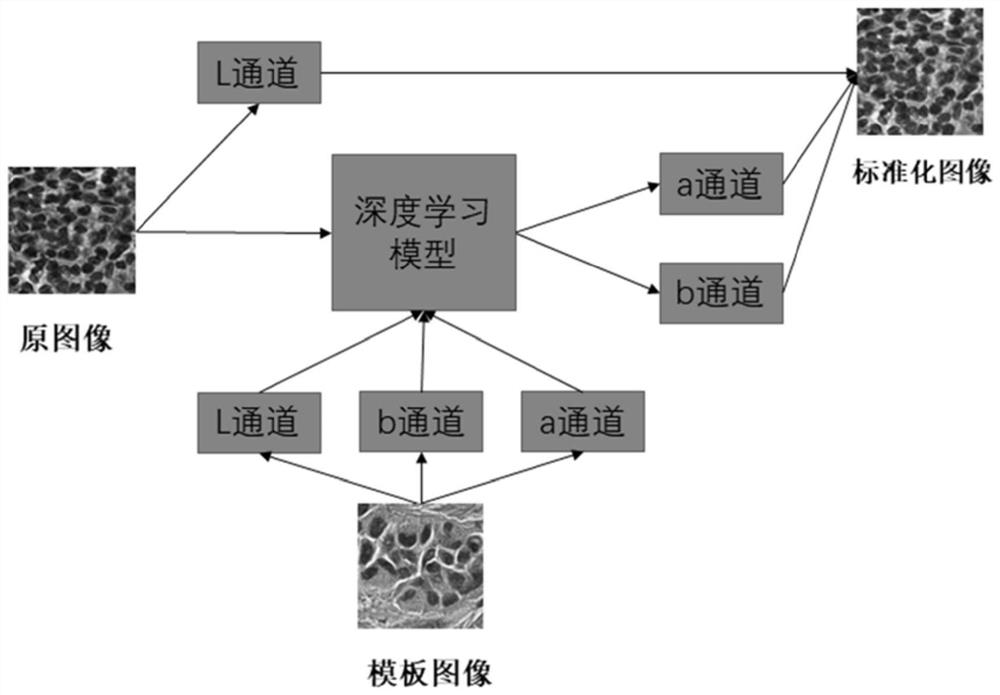A structure-invariant color normalization method for pathological images based on deep learning
A deep learning and pathological image technology, applied in the field of image processing, can solve the problems of long iteration time, no way to predict the dyeing style, and it is difficult to guarantee the dyeing style, so as to achieve strong learning ability, avoid structural deformation problems, and simple network structure Effect
- Summary
- Abstract
- Description
- Claims
- Application Information
AI Technical Summary
Problems solved by technology
Method used
Image
Examples
Embodiment
[0045] Such as figure 2 As shown, a method for normalizing the color of pathological images based on deep learning invariant structure provided in this embodiment includes the following steps:
[0046] S100: Construct a model training set;
[0047] The staining method of the pathological images in the training set is hematoxylin and eosin staining, and the imaging should be performed at 40X or 20X. The obtained high-resolution pathological images are cut into small images with a pixel size of 512*512 pixels. In order to ensure that the model can fit, finally select 2000 images from the cut images as the training set. In this embodiment, the high-resolution pathological images used should all come from the same batch of stained samples, go through the same staining and preparation process, and be scanned and imaged by the same scanner. And it is necessary to ensure that the images used as the training set are of good staining quality and the pathological structure is clear....
PUM
 Login to View More
Login to View More Abstract
Description
Claims
Application Information
 Login to View More
Login to View More - R&D
- Intellectual Property
- Life Sciences
- Materials
- Tech Scout
- Unparalleled Data Quality
- Higher Quality Content
- 60% Fewer Hallucinations
Browse by: Latest US Patents, China's latest patents, Technical Efficacy Thesaurus, Application Domain, Technology Topic, Popular Technical Reports.
© 2025 PatSnap. All rights reserved.Legal|Privacy policy|Modern Slavery Act Transparency Statement|Sitemap|About US| Contact US: help@patsnap.com



